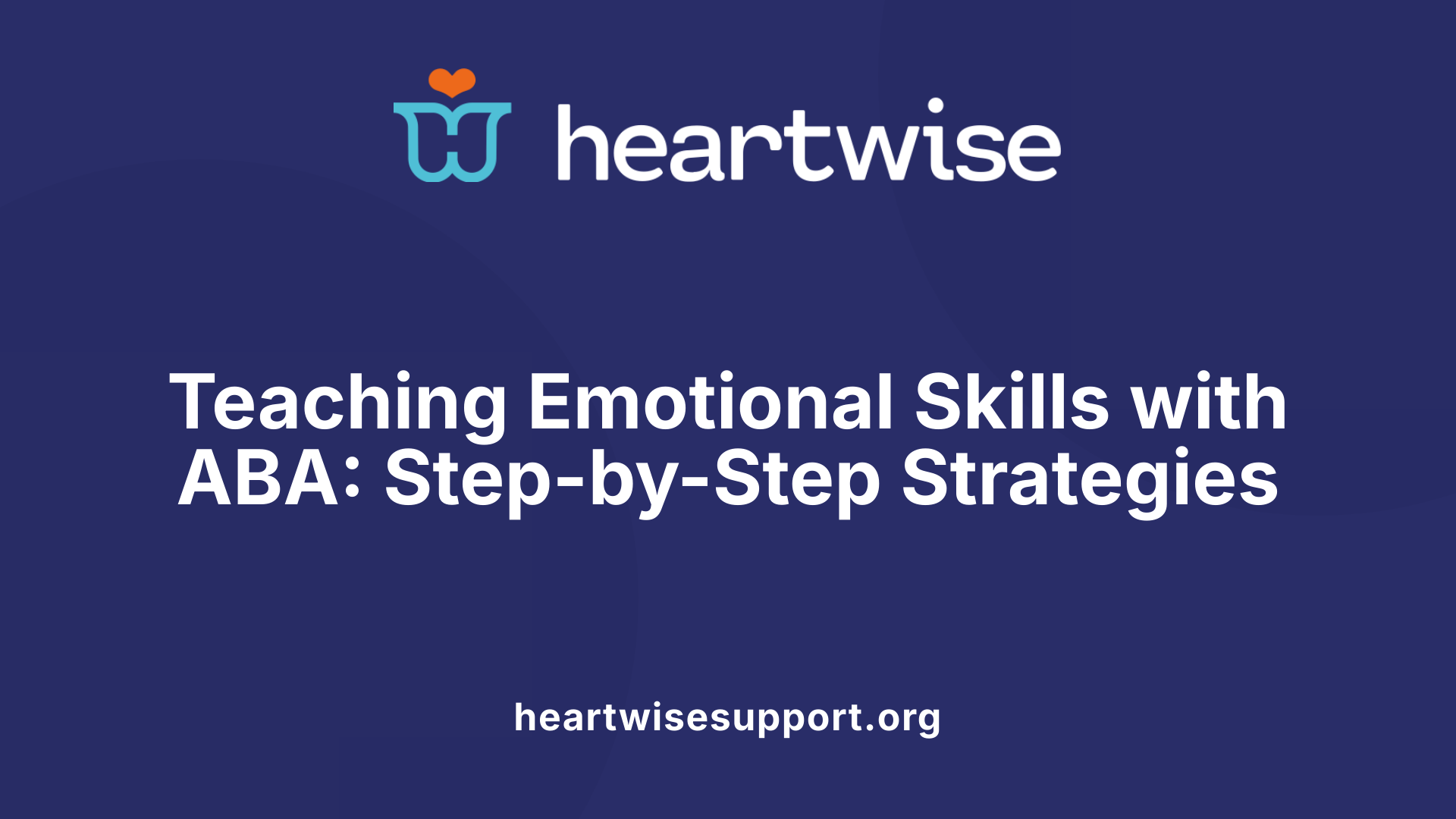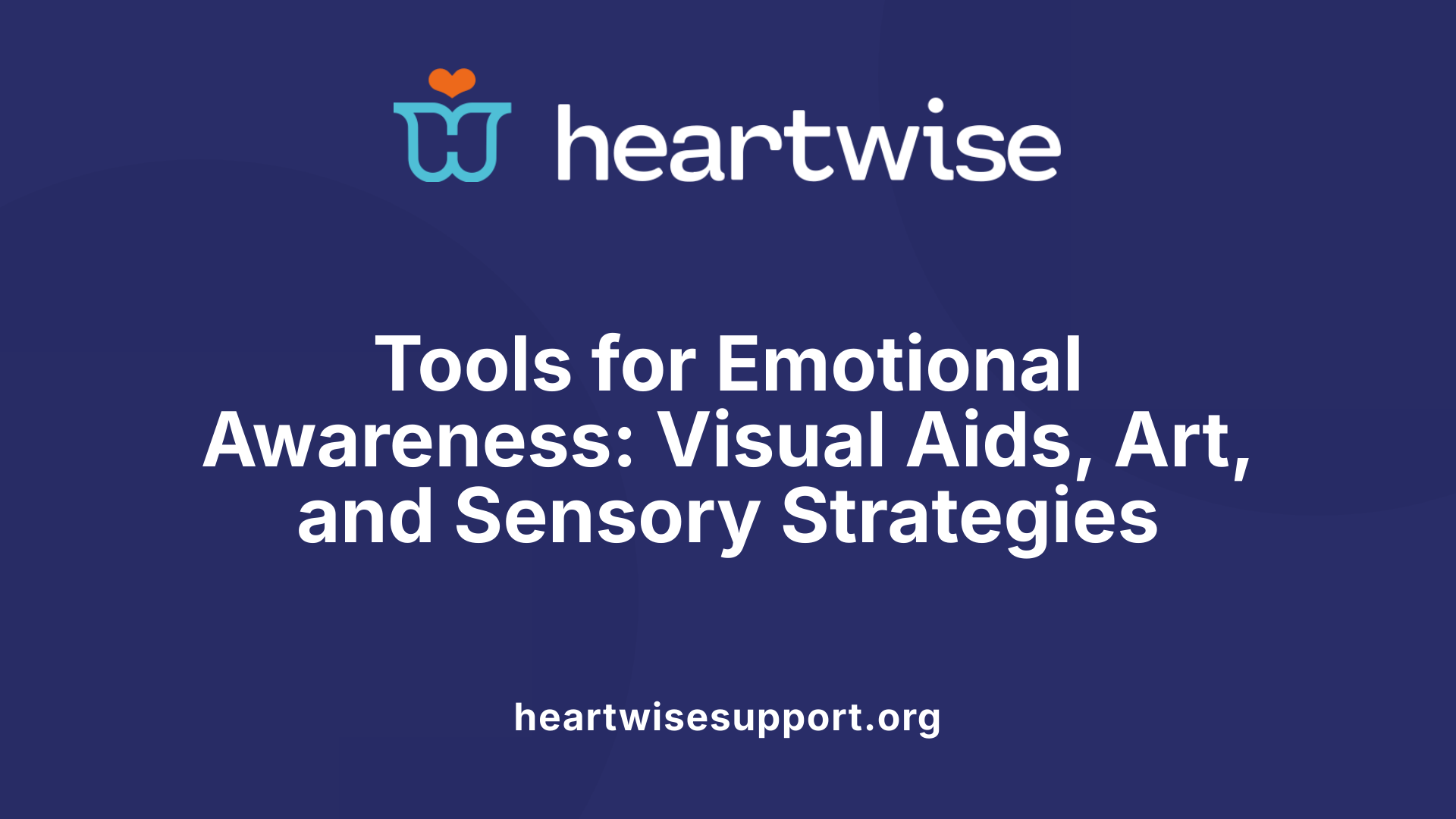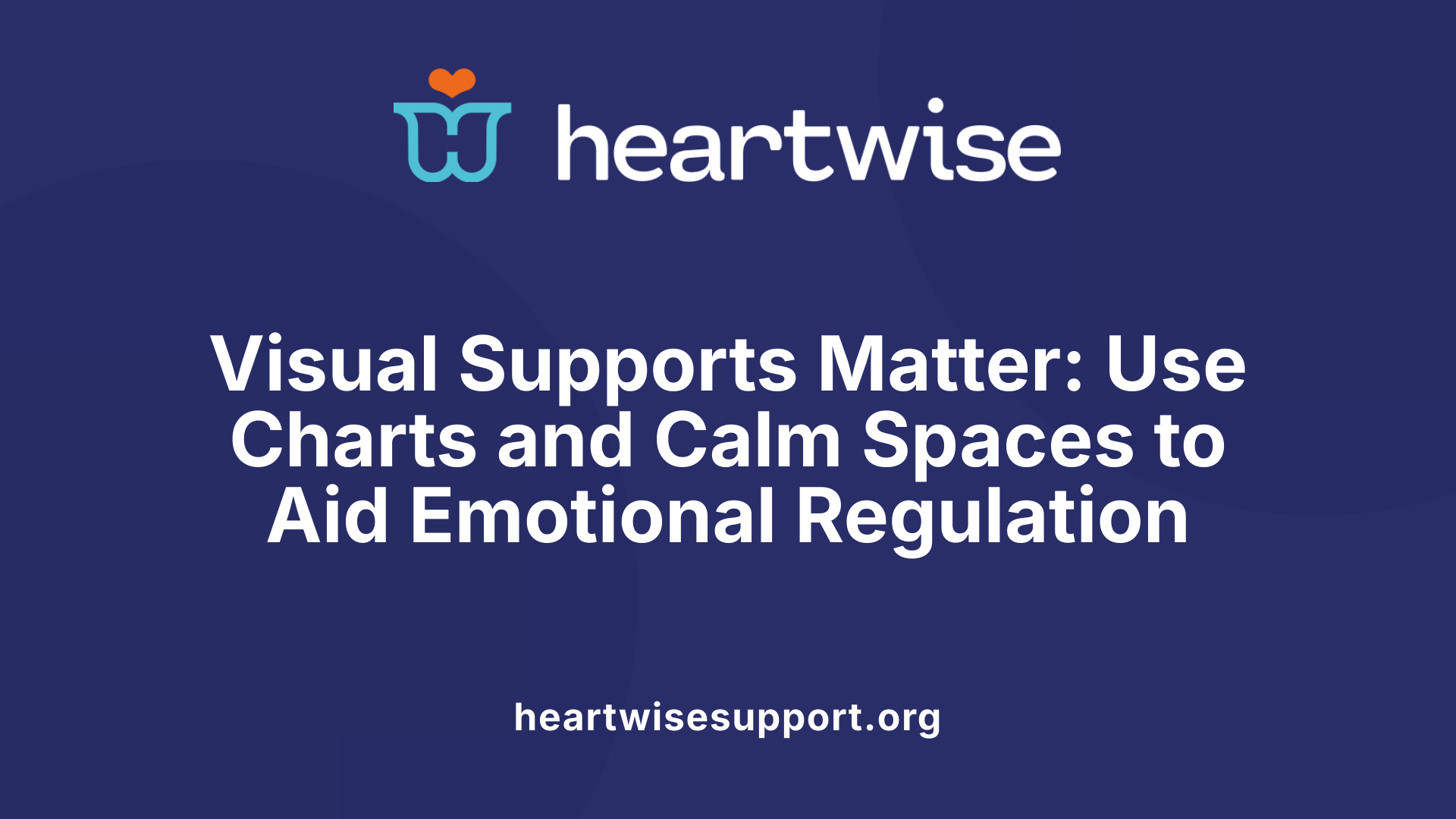Understanding Emotional Regulation in Autism
Supporting emotional regulation in children with autism is essential for their social, communication, and behavioral development. Autism often involves difficulties in recognizing, understanding, and managing emotions, which can lead to challenges like meltdowns, withdrawal, or inappropriate reactions. Recognizing the signs and providing tailored strategies can help children develop these crucial self-regulation skills, fostering greater independence and improved mental health.
Recognizing Signs of Emotional Challenges in Children with Autism
What are common signs and symptoms of emotional challenges in children with autism?
Children with autism often face unique difficulties in managing their emotions, which can manifest in various observable behaviors. One of the most noticeable signs is frequent meltdowns or emotional outbursts, such as crying, yelling, or aggressive behaviors that may seem disproportionate to the situation.
Additionally, withdrawal from social interactions or avoidance of engaging with others can be a key indicator that a child is overwhelmed or distressed.
Changes in behavior or mood, like sudden irritability or sadness, can also signal emotional struggles. These children may exhibit intense reactions to sensory stimuli—such as loud noises, bright lights, or certain textures—that overwhelm their coping abilities.
Physical signs may include tense muscles, rapid breathing, or racing heartbeat, which are signs of heightened arousal or stress.
Children with autism often have difficulty perceiving and interpreting social cues, such as facial expressions or body language, further complicating their emotional regulation.
Repetitive behaviors and strict routines are common characteristics, but when routines are disrupted, children might become visibly distressed or act out.
Early identification of these symptoms allows caregivers, teachers, and therapists to implement supportive strategies. Recognizing emotional difficulties early can facilitate targeted interventions, such as visual supports, calming activities, or social skills training, aimed at fostering better emotional understanding and self-regulation.
Effective Strategies for Developing Self-Regulation Skills
What strategies can parents, caregivers, and educators use to help children with autism develop self-regulation skills?
Supporting children with autism in gaining self-regulation abilities involves a combination of structured routines, visual tools, modeling, and tailored activities. Creating predictable daily routines and visual supports, such as visual schedules and emotion charts, helps children understand what to expect and recognize their emotional states. These visual aids serve as reminders and teaching tools, making abstract feelings tangible and understandable.
Modeling appropriate behavior is essential. Adults who demonstrate calmness, patience, and effective coping strategies—like deep breathing or counting—provide children with observable examples to imitate. Reinforcing these strategies with praise or rewards encourages children to practice healthy self-regulation techniques.
Teaching emotional awareness through social stories, role-playing, and visual aids like the Zones of Regulation involves helping children identify and label their feelings. This understanding allows them to respond appropriately to various situations. For example, discussing situations that trigger certain emotions and exploring suitable reactions empowers children to manage their feelings better.
Incorporating structured activities such as mindfulness exercises, sensory integration techniques, and physical activities can significantly improve emotional stability. Mindfulness practices, including deep breathing or gentle stretches, help children slow down and connect with their feelings. Sensory-based approaches, like using fidget toys or engaging in sensory breaks, can prevent or ease overwhelming sensations.
Creating a safe, consistent environment with regular routines reduces uncertainty, which often triggers emotional distress. Providing a calming space, such as a quiet corner equipped with comforting items, offers children a refuge when overwhelmed.
Finally, individualized interventions supported by professionals such as occupational therapists and psychologists are crucial. These experts can assess specific challenges, such as sensory sensitivities or emotional difficulties, and tailor strategies accordingly. Collaborating with specialists ensures that intervention plans are effective and promote emotional resilience and independence.
These comprehensive approaches collectively foster better emotional understanding, control, and social participation, equipping children with autism with essential self-regulation skills that support their development and well-being.
Teaching Emotional Regulation with Behavior Analytic Therapy (ABA)

How do you teach emotional regulation in behavior analytic therapy (ABA)?
In ABA therapy, fostering emotional regulation involves a structured approach that combines visual tools, functional assessments, and skill-building strategies. Therapists often start by using visual aids like emotion labels, social stories, and emotion cards to help children recognize and name their feelings. These tools make abstract emotional concepts more tangible and understandable.
A core part of ABA is conducting a functional analysis to identify specific triggers of emotional outbursts. This process observes and analyzes antecedents—what happens before an outburst—and consequences—what happens afterward—to understand the purpose or function of the behavior. By understanding these patterns, therapists can develop targeted intervention strategies.
Once triggers are understood, therapists employ gradual prompting techniques, reinforcing small successes to shape more appropriate emotional responses. Reinforcement strategies motivate children to practice self-control and manage their emotions more effectively over time.
Role-playing scenarios serve as a safe, controlled environment where children can rehearse emotionally appropriate behaviors. These simulated interactions allow children to practice different responses to common triggers, gaining confidence and independence.
Furthermore, continuous data collection and progress monitoring are vital components. These records help therapists assess the effectiveness of interventions, make necessary adjustments, and ensure skills generalize across different environments and people.
Overall, ABA’s systematic approach aims to develop not only emotional understanding but also practical skills for self-regulation, enabling children to navigate their emotions more successfully in everyday life.
Activities and Tools to Foster Emotional Awareness

What are effective strategies and activities to help children with autism manage their emotions?
Supporting children with autism in understanding and regulating their emotions involves various visual, behavioral, and creative methods. Visual tools such as feelings charts, emotion thermometers, and the Zones of Regulation provide concrete ways for children to recognize and categorize their feelings. These resources visually depict different emotional states, helping children identify what they are experiencing throughout the day.
Role-playing, social stories, and reflection exercises are also powerful. These activities teach children to label their emotions, understand cause-and-effect relationships, and develop responses suited to different situations. For example, children might act out scenarios or read stories illustrating emotional responses, which builds their ability to connect feelings with appropriate actions.
Emotion cards, comic strip conversations, and social stories serve as engaging tools to facilitate understanding and expression of feelings. These methods help children articulate emotions they might struggle to verbalize by providing visual cues and context.
In addition, incorporating creative activities such as art, music, and role-playing offers children alternative outlets for exploring emotions. Drawing, singing, or acting out feelings can deepen emotional insight and create a joyful learning environment.
Building a 'toolbox' of calming activities further supports emotional management. This personalized collection may include deep breathing exercises, sensory tools like fidget toys, mindfulness practices, and movement exercises such as stretching or swinging. Practicing these strategies consistently equips children with a set of techniques they can use independently during moments of distress.
Collectively, these approaches foster emotional awareness, enhance self-regulation, and improve social interactions, contributing to overall wellbeing and development for children with autism.
Supporting Emotional Regulation at Home and in the Community

How can caregivers support emotional regulation in children with autism?
Supporting children with autism in managing their emotions involves a combination of strategies and environmental modifications. Establishing calming spaces, such as sensory rooms or quiet corners decorated with soft pillows, fidget toys, and sensory tools, provides a safe refuge for children to self-soothe during stressful moments. Creating consistent routines and visual schedules helps children anticipate transitions, reducing anxiety and emotional surprises.
Practicing calming activities like deep breathing exercises, mindfulness, and sensory-based strategies equips children with tools to calm themselves when overwhelmed. Visual aids, including emotion charts, social stories, and the Zones of Regulation, serve as universal language to help children recognize, understand, and communicate their feelings. These tools support emotional awareness and appropriate responses.
Implementing predictable routines—such as designated quiet times, sensory breaks, and smooth transition cues—helps maintain a sense of security. Collaborating with therapists, teachers, and caregivers for consistent application of strategies ensures that emotional regulation supports are reinforced across environments.
Involving professionals like occupational therapists can further customize interventions, using sensory integration and behavioral techniques tailored to each child's sensory profile and needs. Building coping skills, including taking deep breaths, asking for help, taking breaks, engaging in physical activity, or using calming tools from a personalized 'toolbox,' prepares children to handle emotional challenges effectively.
Supporting community acceptance and understanding is equally important. Recognizing and respecting self-soothing behaviors as expressions of stress rather than misbehavior fosters an inclusive environment. When caregivers and community members approach these behaviors with patience and empathy, children feel safer and are more likely to develop healthier emotional regulation over time.
Overall, structured routines, visual supports, environmental sensory tools, professional collaboration, and community understanding combine to create a nurturing environment where children with autism can develop robust emotional regulation skills—meaningful for their mental health, social participation, and overall well-being.
The Role of Supportive Environments and Professional Interventions

Creating predictable, safe, sensory-friendly environments
Establishing environments that are consistent, calming, and tailored to individual sensory preferences can significantly enhance emotional regulation in children with autism. Predictable routines and clear expectations reduce anxiety and help children feel secure. Sensory-friendly spaces, equipped with soft lighting, calming textures, and sensory tools like fidget toys, provide a refuge where children can self-soothe and regain emotional balance.
Using visual supports like emotion level charts and calming spaces
Visual aids are invaluable in teaching children to recognize and manage their emotions. Emotion level charts categorize feelings from low to high intensity, helping children identify their current state and choose appropriate responses. Creating designated calm-down corners with visual cues and tools supports self-regulation and encourages independence in managing feelings.
Implementing interventions such as occupational therapy, sensory integration, and psychoeducation
Occupational therapy plays a crucial role by addressing sensory sensitivities and developing coping strategies through sensory integration techniques. Psychoeducational approaches enhance emotional literacy, aiding children to understand their feelings and reactions. Structured programs like the Incredible Five Point Scale visually depict emotional states, enabling children to better communicate and regulate.
Involving professionals like psychologists and speech therapists for tailored strategies
Multidisciplinary support from psychologists, speech therapists, and other specialists ensures interventions are customized to each child's needs. Psychologists may employ cognitive-behavioral therapy (CBT) and mindfulness techniques to improve emotional control. Speech therapists help children develop effective communication strategies, including alternative communication methods, which are essential for expressing feelings and reducing frustration.
Fostering authentic relationships and consistent routines to foster regulation
Building trusting, loving relationships between caregivers, teachers, and children creates a secure environment conducive to emotional growth. Consistent routines, visual schedules, and predictable transitions decrease uncertainty and emotional outbursts. Adult modeling of self-regulation and calm responses demonstrates healthy emotional management, reinforcing positive behaviors.
Monitoring and adapting strategies based on progress and responses
Regular assessment of a child's response to interventions allows for adjustments tailored to their evolving needs. Tracking emotional responses and behavioral changes helps identify which strategies are effective, enabling professionals and caregivers to refine approaches and support ongoing emotional development.
Nurturing Emotional Well-being in Children with Autism
Supporting emotional regulation in children with autism requires a comprehensive, holistic approach that combines visual supports, predictable routines, communication strategies, sensory integration, and professional therapies. Creating a safe, predictable environment fosters trust and resilience, while modeling calm and positive behaviors sets an example for children to emulate. Early recognition of signs of emotional distress and tailored interventions—such as the Zones of Regulation, social stories, and sensory tools—enable children to develop vital self-regulation skills. Building these skills not only improves children’s ability to manage their emotions across various settings but also enhances their social participation, mental health, and overall quality of life. Empowering caregivers, educators, and professionals with effective strategies and resources ensures that children with autism can navigate their emotional landscape with confidence and support.
References
- 25 Must-Try Techniques for Autism Emotional Regulation
- Emotion Regulation: Concepts & Practice in Autism Spectrum Disorder
- How to Improve Emotional Self-Regulation Among Children with ...
- Emotional Regulation, Part Two: Using Co-regulation to Teach ...
- Expert Q&A: Understanding autism emotional regulation
- Autism, Meltdowns, and the Struggle to Manage Emotions
- Emotions: autistic children & teens | Raising Children Network
- Emotional Regulation for Young Autistic Children - LuxAI S.A.
- Navigating Emotional Dysregulation in Children with Autism
- How Can We Help Kids With Self-Regulation? - Child Mind Institute











